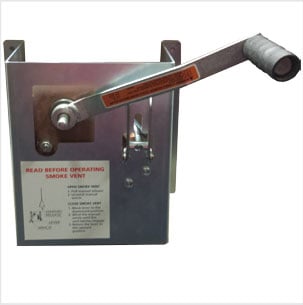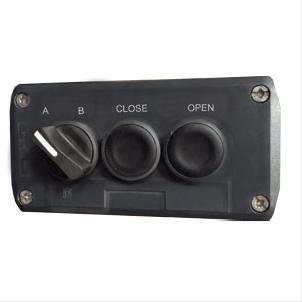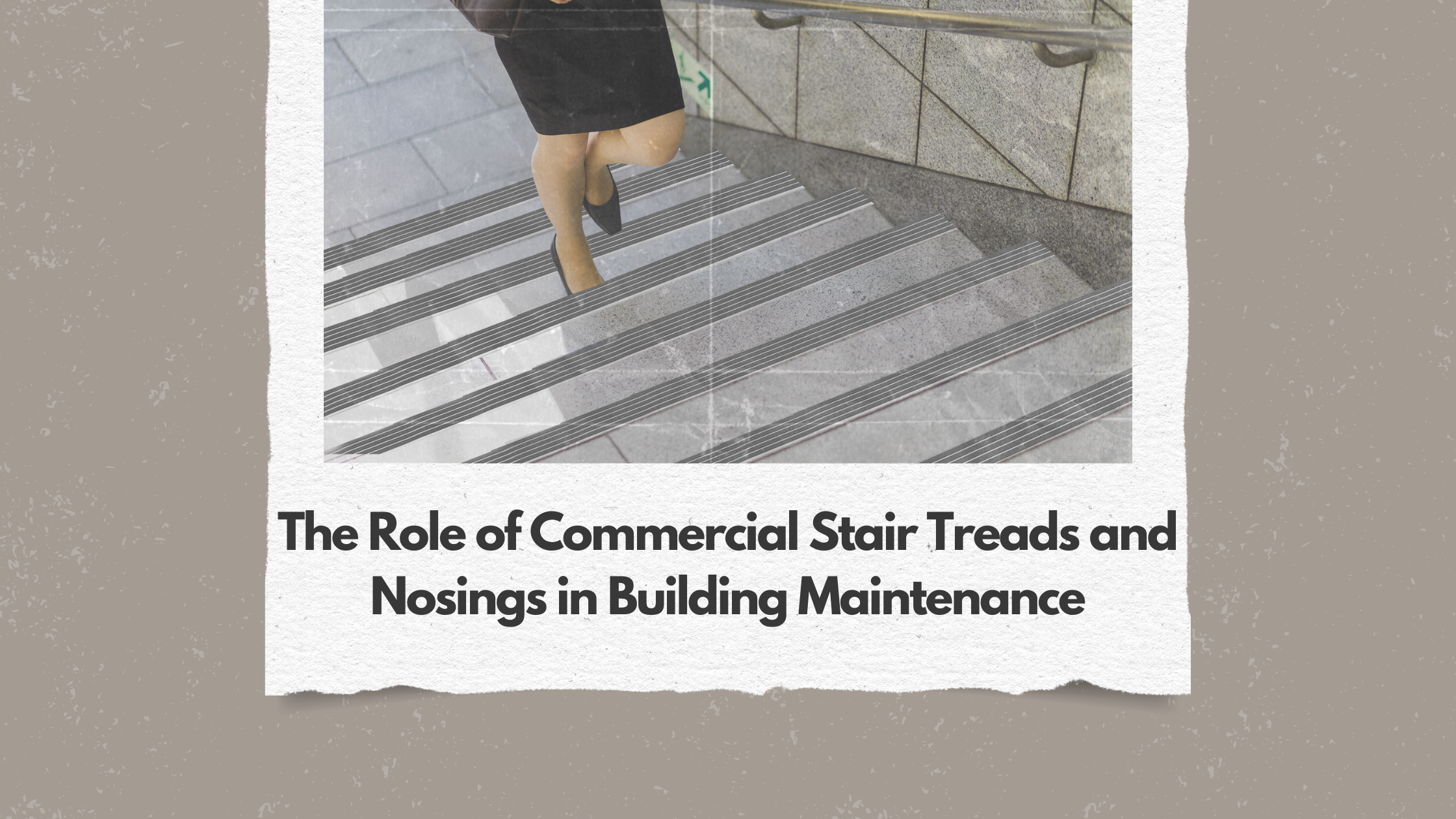Understanding Smoke Vent Closures
.png)
A Look at Manual, Winch, and Motorized Control Systems
In buildings and structures, smoke vents play a crucial role in ensuring the safety of occupants in the event of a fire. These vents are designed to exhaust smoke and heat, allowing for a safe evacuation and reducing potential damage to the structure. While the opening of smoke vents is essential, equally important is their closure. In this article, we will explore three common methods of smoke vent closure: manual, winch, and motorized control systems. Each method offers unique advantages, and understanding their differences can help facility managers and building owners make informed decisions about their fire safety systems.
Closing smoke vents can be challenging. Unlike a roof hatch, smoke vents are naturally designed to be in an open position. Due to the spring forces involved, there is a requirement for sufficient force to counteract the tendency of the doors to open. According to code regulations, smoke vents need to be able to lift 10 lbs. per square foot. For a standard configuration measuring 4ft by 8ft, this translates to a total closing force of 320 lbs., or approximately 160 lbs. per door in the case of a double-leaf unit. Consequently, to effectively close the doors, an equivalent force of 160 lbs. is necessary.
Options for closing the door include:
-
Manual Smoke Vent Closure:
The manual closure system is a straightforward and reliable method of closing smoke vents. It involves a physical operation by trained personnel to manually close the vents in the event of a fire. Manual systems are often simple in design, consisting of pull ropes, chains, or levers that allow for easy and quick closure of the vents. This method is widely used in smaller buildings or facilities with limited smoke vent requirements. Manual closure systems are cost-effective, as they do not require complex mechanisms or power sources. However, their effectiveness relies heavily on trained personnel being present during emergencies to ensure timely closure.
-
Winch Smoke Vent Closure:
Winch-operated smoke vents provide an intermediate level of control compared to manual systems. This method involves the use of a mechanical winch system that enables remote closure of the vents. The winch mechanism can be operated manually or powered by electricity or compressed air, depending on the specific design. Winch systems are often used in larger buildings or structures where manual closure is impractical due to the size or height of the vents. The advantage of winch systems is that they allow for quicker and more efficient closure, even in challenging-to-reach locations. However, they still rely on human intervention to initiate the closure process. The option of using winch-operated smoke vents is commonly employed in theatre applications. In such scenarios, the vents are often secured to the stage floor and equipped with a winch mechanism. This allows for the convenient cranking of the winch, enabling the closure of the smoke vent doors.
method involves the use of a mechanical winch system that enables remote closure of the vents. The winch mechanism can be operated manually or powered by electricity or compressed air, depending on the specific design. Winch systems are often used in larger buildings or structures where manual closure is impractical due to the size or height of the vents. The advantage of winch systems is that they allow for quicker and more efficient closure, even in challenging-to-reach locations. However, they still rely on human intervention to initiate the closure process. The option of using winch-operated smoke vents is commonly employed in theatre applications. In such scenarios, the vents are often secured to the stage floor and equipped with a winch mechanism. This allows for the convenient cranking of the winch, enabling the closure of the smoke vent doors. -
Motorized Control Smoke Vent Closure:
Motorized smoke vent closure systems offer the highest level of automation and control. These systems are designed to automatically close the vents upon detecting the presence of smoke or fire. Motorized systems utilize sensors, such as smoke detectors or heat sensors, to trigger the closure mechanism. The closure can be achieved through the use of motors, actuators, or pneumatic devices, depending on the specific system. Motorized closure systems provide significant advantages in terms of speed and reliability. They eliminate the reliance on human intervention, ensuring immediate closure in case of a fire. Moreover, motorized systems can be integrated with building fire management systems, enabling centralized control and monitoring of the smoke vent operations.
designed to automatically close the vents upon detecting the presence of smoke or fire. Motorized systems utilize sensors, such as smoke detectors or heat sensors, to trigger the closure mechanism. The closure can be achieved through the use of motors, actuators, or pneumatic devices, depending on the specific system. Motorized closure systems provide significant advantages in terms of speed and reliability. They eliminate the reliance on human intervention, ensuring immediate closure in case of a fire. Moreover, motorized systems can be integrated with building fire management systems, enabling centralized control and monitoring of the smoke vent operations.
In accordance with code regulations, the presence of a dampener is required to facilitate the controlled opening of smoke vent doors. Without the dampener, the doors would rapidly open with a potentially dangerous and forceful motion, posing a significant risk to safety. The inclusion of a dampener ensures a gradual and safer opening of the doors.
The closure of smoke vents is a critical component of fire safety systems in buildings and structures. Manual, winch, and motorized control systems offer different levels of control and automation. While manual closures are cost-effective and simple, winch systems provide remote operation capabilities. Motorized systems, on the other hand, offer the highest level of automation and can be integrated with building management systems for enhanced control and monitoring. The choice of smoke vent closure method depends on various factors, including building size, vent locations, and budget considerations. Understanding the advantages and limitations of each system is vital in making informed decisions to ensure the safety of occupants and property during fire incidents.
Nystrom understands the complexities of smoke vents, codes, and applications. For more information, please visit our website or contact Sales & Customer Support.



